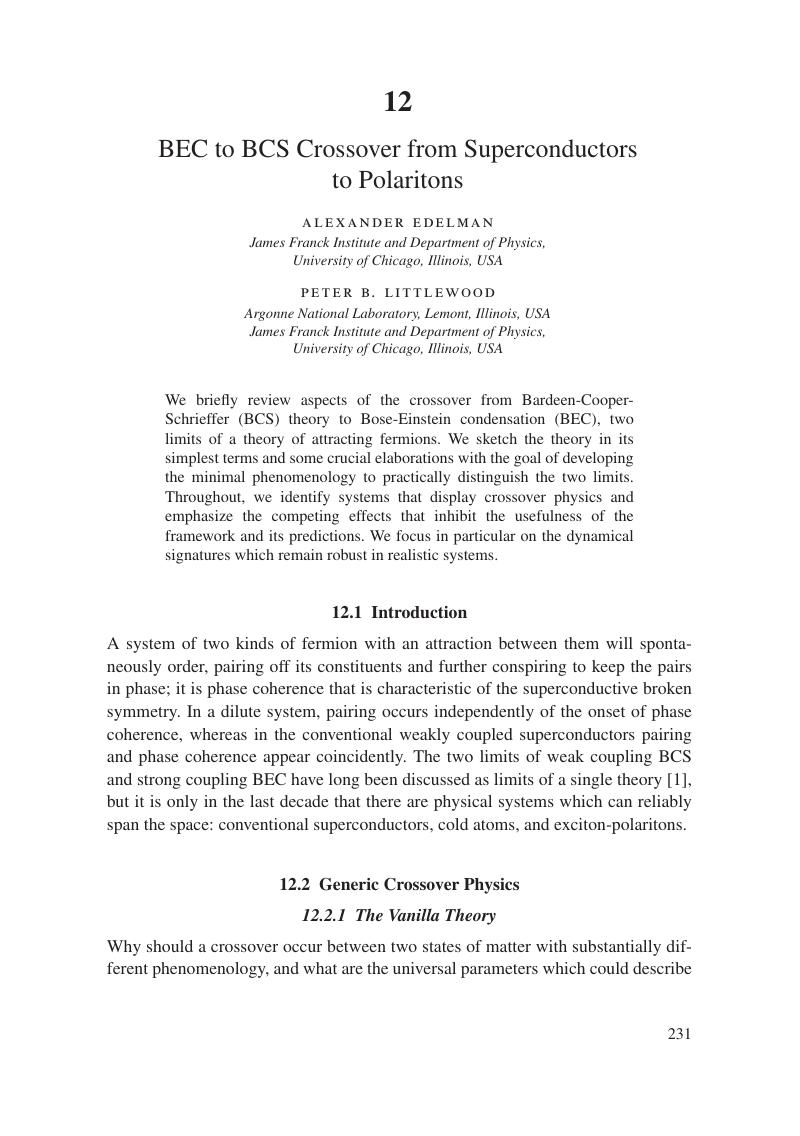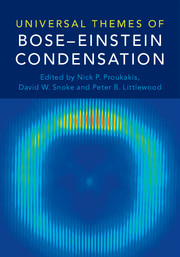Book contents
- Frontmatter
- Contents
- Foreword
- Preface
- Part I Introduction
- Part II General Topics
- Editorial Notes
- 5 The Question of Spontaneous Symmetry Breaking in Condensates
- 6 Effects of Interactions on Bose-Einstein Condensation
- 7 Formation of Bose-Einstein Condensates
- 8 Quenches, Relaxation, and Prethermalization in an Isolated Quantum System
- 9 Ultracold Gases with Intrinsic Scale Invariance
- 10 Berezinskii-Kosterlitz-Thouless Phase of a Driven-Dissipative Condensate
- 11 Superfluidity and Phase Correlations of Driven Dissipative Condensates
- 12 BEC to BCS Crossover from Superconductors to Polaritons
- Part III Condensates in Atomic Physics
- Part IV Condensates in Condensed Matter Physics
- Part V Condensates in Astrophysics and Cosmology
- Universal Bose-Einstein Condensation Workshop
- Contributors
- Index
- References
12 - BEC to BCS Crossover from Superconductors to Polaritons
from Part II - General Topics
Published online by Cambridge University Press: 18 May 2017
- Frontmatter
- Contents
- Foreword
- Preface
- Part I Introduction
- Part II General Topics
- Editorial Notes
- 5 The Question of Spontaneous Symmetry Breaking in Condensates
- 6 Effects of Interactions on Bose-Einstein Condensation
- 7 Formation of Bose-Einstein Condensates
- 8 Quenches, Relaxation, and Prethermalization in an Isolated Quantum System
- 9 Ultracold Gases with Intrinsic Scale Invariance
- 10 Berezinskii-Kosterlitz-Thouless Phase of a Driven-Dissipative Condensate
- 11 Superfluidity and Phase Correlations of Driven Dissipative Condensates
- 12 BEC to BCS Crossover from Superconductors to Polaritons
- Part III Condensates in Atomic Physics
- Part IV Condensates in Condensed Matter Physics
- Part V Condensates in Astrophysics and Cosmology
- Universal Bose-Einstein Condensation Workshop
- Contributors
- Index
- References
Summary

- Type
- Chapter
- Information
- Universal Themes of Bose-Einstein Condensation , pp. 231 - 248Publisher: Cambridge University PressPrint publication year: 2017



